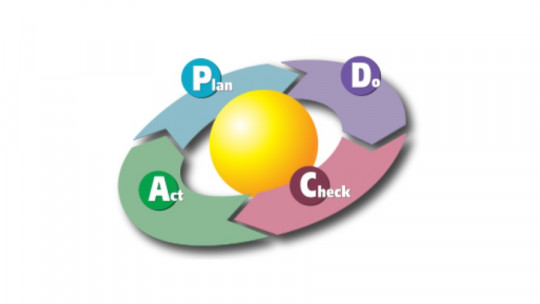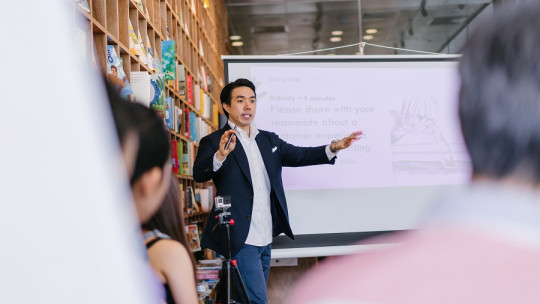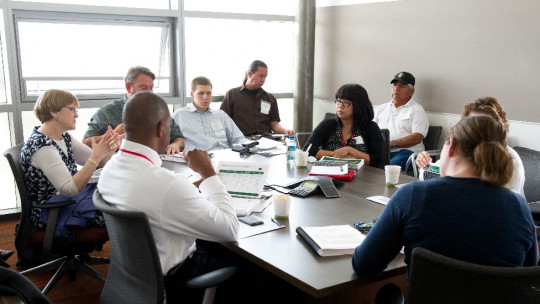There are many business management models to try to improve productivity and many of them come from Japan.
This is the case of the Kaizen method With these paragraphs, we will analyze this methodology in detail to understand where its effectiveness lies. We will see what improvements it proposes compared to other systems. We will also discover the most used tools.
What is the Kaizen method?
The Kaizen method is a procedure for the management of organizations that seeks to achieve the highest possible production at the lowest cost To do this, fundamentally, what it tries to do is optimize all the tasks involved in the process, so that all of them are effective and also efficient. That is, it seeks to perfect each of the parts of the production system.
The term Kaizen is Japanese, the place of origin of this method. It means change (“cai”) and goodness (“zen”), therefore, change for the better would be the complete definition. It is not a modern methodology, but was created in post-war Japan, after the Second World War, as one of the ways to achieve rapid industrial reconstruction in a country devastated after the tremendous war conflict.
The philosophy proposed by the Kaizen method is that, through a series of small changes, we can achieve great improvements in the final results, since each small change multiplies the final effect. It is not only about improving existing processes, but also about eliminating those that, instead of contributing, are actually taking away from us, either because they are unnecessary or because they can be done in a much more efficient way.
In someway, This system would be promoting going slower, in exchange for those small steps being always safe , so the probabilities of encountering major unforeseen events that require dedicating large resources to resolve them will decrease. Another advantage of moving forward in small steps is that it makes the change progressive and therefore the reluctance towards it will also be less.
The five S’s of the Kaizen method
The Kaizen method is characterized by a system known as the five S’s, since it includes five Japanese words that begin with this letter and each of them indicates one of the qualities of this methodology that we will have to take into account when applying it. Below we will break them down so that we can know them all in detail.
1. Seiri
The first S of the Kaizen method corresponds to the term Seiri. This concept focuses on the organization of the elements that the company, in order to be able to a distinction between those parts that are essential for production and at the same time those others emerge that are actually contributing little or nothing
2.Seiton
Once that first identification was made, the Seiton, or order, would arrive. It is about making lists with the positive parts that we have been identifying throughout the previous point. The objective of this task is to have a diagram of all the essential tasks in our process and that they are all properly identified.
In this way, we will no longer have to use resources in the future to find them, since it is a job that we will have done previously.
3. Seiso
The key to the Kaizen method lies in Seiso. This It is the point at which we will find possible errors or ineffective forms of action within the production system of our company It is not just about identifying them, the important thing is to find a remedy for each of them.
4. Seiketsu
Thus we would arrive at Seiketsu, the fourth S. What is proposed at this point is the importance of have resources so that all employees enjoy the appropriate work environment and can thus form a competitive team And a company can only reach the top if it has the appropriate tools to do so.
5. Shitsuke
Shitsuke is the concept that closes the circle of the 5 S’s of the Kaizen method. This point refers to the commitment that all members of the organization must make with the methodology It is essential that everyone rows in the same direction, taking what this system proposes as a guide for action. Only in this way will the best results be achieved.
Kaizen groups
One of the techniques used by the Kaizen method is that of the so-called Kaizen groups, which in turn are based on Ishikawa quality circles These groups are made up of six people, of which one of them will act as directing the group and another will be the one who advises them regarding the application of the system, so there would be four members of the team as such.
The first thing this group has to do is define the problem at hand and what is why they have come together. They must then observe the characteristics of said situation to have a complete perspective of it. They will then move on to the analytical phase, trying to find out what could have caused the problem.
The next phase involves the team taking action, carrying out tasks that solve the identified causes and therefore eliminating the problem It is important to verify that the action has been effective and that therefore the incident has been resolved. If not, we would have to return to the previous phase to find other different solutions.
The team’s work does not end here. It’s time to standardize the actions that have been carried out as part of the usual work routines in the organization ; This will ensure that the problem that brought them together in the first place will no longer arise again. All that remains is to plan the team’s next objective in order to continue identifying and solving problems.
Other techniques of this methodology
The Kaizen method uses other tools to achieve the proposed objectives. Let’s see some of them.
1. Kaizen Kobetsu
This tool proposes different ways to address the problems that the company faces, depending on their complexity and danger In this sense, if the incidents are of low importance, the Kobetsu Kaizen Flash would be formed, very short team meetings (5 minutes) held every day. Once the problem is addressed, it should be resolved within a maximum of 3 hours.
If the problems they face are already more complex and therefore require more resources to be solved, the way to work would be the Kaizen Event. In this case, the incident must be resolved within 8 hours of its identification. Both in this case and in the previous one, the solution is normally carried out by the person who alerted us to the problem or someone of the same rank.
Finally, and For cases in which the problems are too important to be solved in such a short time, the Kobetsu Kaizen tool would come into play To do this, teams are brought together that have members from the different departments involved and at the same time other tools are used that may be useful for resolution. Up to 3 hours a day will be dedicated, reaching a maximum of 16 hours to provide a definitive solution.
2. Kaizen Teian
Another tool that is used in the Kaizen method is Kaizen Teian. Its foundation is that Ideas are only useful when they are carried out in reality To this end, they give great importance to the talent that each worker has and the proposed ideas are supported if they are in line with improving productivity. Thanks to these ideas, small improvements will be achieved, which is the fundamental principle of this methodology.
It is required that all members of the company are committed to this method so that they can contribute all the suggestions they can and thus, with everyone’s joint work, the best results are achieved. To do this, they can be rewarded for good ideas, but not financially, so that this is not the only motivation for participation.
3. Kaizen Nissan
Kaizen Nissan, named after its application in this company, is another system designed to seek improvements. It has the 2-day Kaizen aspect, in which a group with experts in various departments analyze a specific job and make changes on the spot to make it more productive.
On the other hand, there is Kaizen 2 hours, another of the modalities of this Kaizen method tool. In this case, it is the head of the section who dedicates that time to making improvements, even if they are very small, with which he seeks to increase the efficiency of his employees.









